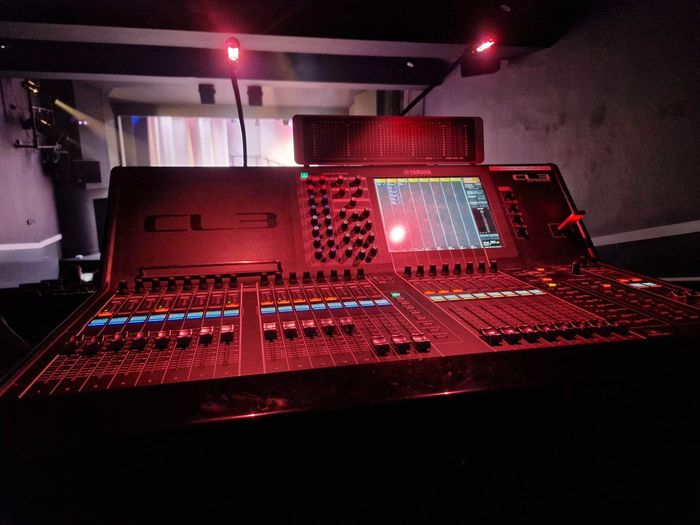Spring Awakening emphasises the sensitive over the anarchic
While this revival opens up interesting possibilties, it doesn’t quite live up to the original text

There is something inherently admirable about amateur productions of Spring Awakening. It works best with an entirely young cast and it is inspiring to see a group of young people taking ownership of a proscenium arch production. There is nevertheless a slightly meandering, sepia-toned quality to this production which feels simultaneously thoughtful and too careful for the text.
“Mia Grant and Manon Harvey highlight the difficult existence of gender non-conforming people”
Spring Awakening follows the fatal consequences for 19th-century German school kids who, having been deprived of sexual education, have no way of understanding their urges and desires. This production develops this idea and deconstructs notions of gender. By casting Jas Ratchford as Moritz, but not changing the script, Mia Grant and Manon Harvey highlight the difficult existence of gender non-conforming people within a culture which leaves no room for exploring one’s identity. This adds a potent subtext to Moritz’s struggle to understand sexuality when Melchior writes him a sex manual. The excellent performances of Jas Ratchford and Theo Chen (as Martha) sell this idea, and Ratchford also avoids the often overplayed tropes of twitching and stuttering associated with Moritz in previous productions, instead offering something much more subdued and chilling.
As a whole, vocal performances, particularly in The Song of Purple Summer, are good. They are ably supported by Emily Huxter’s band, which contributes to the hazy atmosphere with the musical interludes between scenes. However, the production’s handling of the songs sometimes struggles. Rather than being moments of emotional explosion, they are played more naturalistically, flattening the score’s dynamism. Michael Mayer’s original production used hand-held microphones to distinguish narrative scenes from songs. This reinforced the disruptive spirit of the characters and turned the songs, their lyrics broad in focus, into concert performances, contrasting with conventional musical theatre where songs drive the narrative.
“The songs slow the show”
Similar to Rupert Goold’s 2021 revival, this production doesn’t use handheld microphones. Whereas Goold’s set was a bleak, almost institutional prison-scape for its characters, charging every song with an anarchic, physical spirit, this production’s aesthetic mirrors Mayer’s softer original vision. In losing the distinction between the songs and the book scenes (which themselves struggle with underwritten female characters and effortful wit), the songs occupy a more traditional musical theatre space without the typical qualities of successful musical theatre songs. The songs slow the show, and their repetitive statements (“Touch me,” “Our bodies are the guilty ones”) begin to reap fewer and fewer rewards.
This production is also limited by its ambitious set. The two-level structure at the back of the stage resembles a sort of grunge playground, lit like an MTV studio. However, as the show progresses, it never quite justifies its presence (Where are we? Whose perspective is this? Are internal and external environments being distinguished?), instead limiting the space for the cast to move and let rip in Totally Fucked and The Bitch of Living. Whilst the hanging white curtains, which possibly resemble bed sheets, are mostly used to create a backlit silhouette effect for the show’s more intimate moments, during I Believe, the cast at the front of the stage blocks the silhouette image, though this can be easily fixed.
During scene changes, the cast themselves move the curtains, changing the aperture through which we see their story, though this thematic gesture is reduced by its taking place during several blackouts. Regardless, projection is successfully used, particularly during Those You’ve Known. Having seen the damage caused by a society which conceals reality, the projected images of a more realistic landscape suggest Xander Pang’s Melchior is imagining a new, truer reality for himself, albeit one limited to a sketchy fantasy.
The aesthetic is generally warm and Mama Who Bore Me (Reprise), as well as Totally Fucked are less angry and more celebratory, perhaps optimistic. The choreography, which works best in The Bitch of Living, is placed front and centre, but this all means that the cast appear less as individual personalities and more as a metaphorical group bound by the rush of young sexuality, sometimes making for underdeveloped character relationships. This is mostly compensated for, however, with the sense of togetherness which the ensemble work has created.
This production understands that our idea of youth has changed between 2006 and 2023. In a musical about the importance of sex education, maybe it’s a mistake to see sex and masturbation only through silhouettes. However, this gesture implicitly highlights our modern awareness of safety and consent, conversations not had in the same way when Spring Awakening was written. It might not be the most effective production of Spring Awakening, but it’s very well intended; the simple fact of staging an ambitious production of this musical, a musical which foregrounds young people telling a story the way they want it to be told, in itself conveys the message of the original musical.
Spring Awakening is playing at the ADC Theatre from Tuesday the 9th to Saturday the 12th of May, 7:45pm.
 Interviews / You don’t need to peak at Cambridge, says Robin Harding31 December 2025
Interviews / You don’t need to peak at Cambridge, says Robin Harding31 December 2025 News / Unions protest handling of redundancies at Epidemiology Unit30 December 2025
News / Unions protest handling of redundancies at Epidemiology Unit30 December 2025 Comment / What happened to men at Cambridge?31 December 2025
Comment / What happened to men at Cambridge?31 December 2025 Features / ‘Treated like we’re incompetent’: ents officers on college micromanagement30 December 2025
Features / ‘Treated like we’re incompetent’: ents officers on college micromanagement30 December 2025 Theatre / We should be filming ADC productions31 December 2025
Theatre / We should be filming ADC productions31 December 2025









